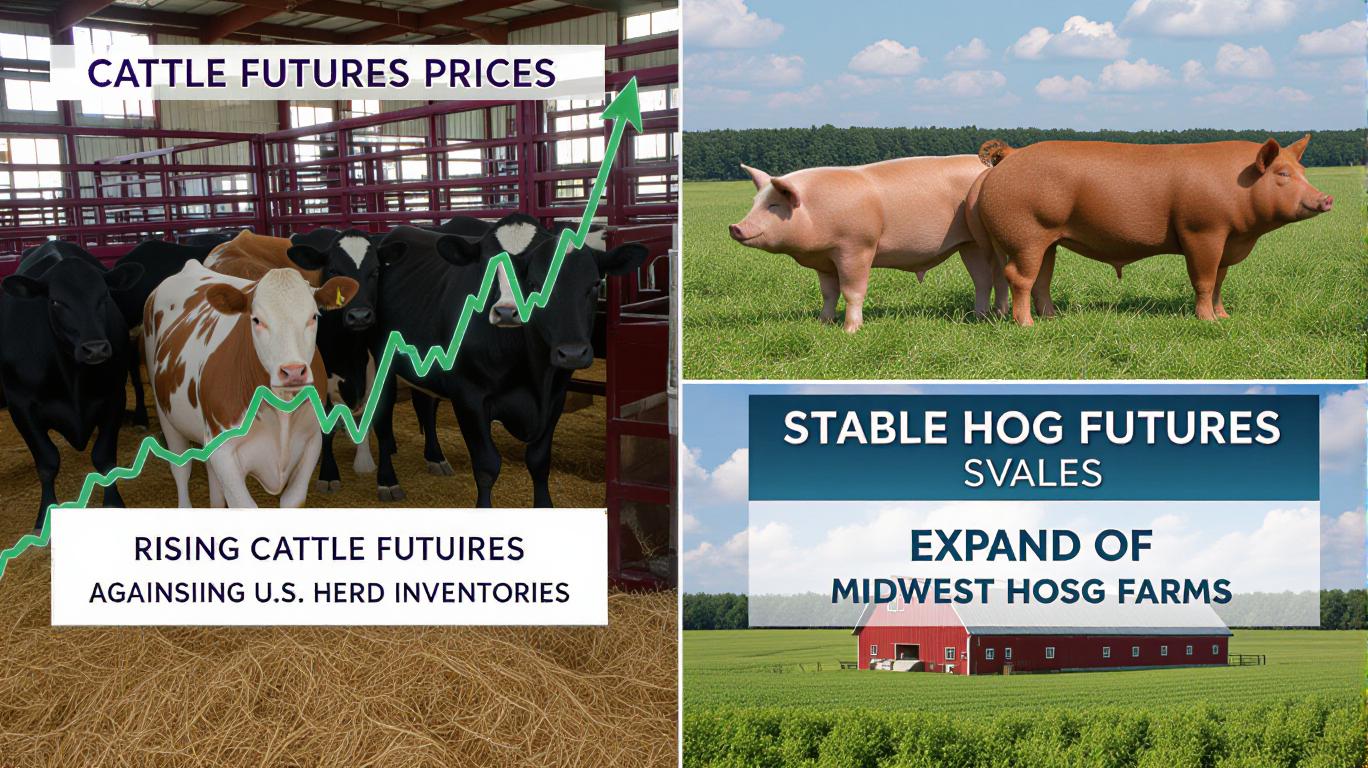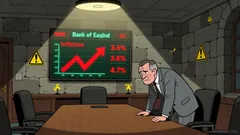AInvest Newsletter
Daily stocks & crypto headlines, free to your inbox
The futures markets for CME Lean Hogs and Cattle are diverging sharply in 2025, driven by asymmetric supply-demand fundamentals, seasonal patterns, and geopolitical headwinds. While cattle face a historic supply crunch, hog markets are navigating a more balanced trajectory. This article dissects these dynamics to identify tactical trading opportunities and strategic long-term positions.

The USDA reports a 1% decline in total U.S. cattle inventories to 86.7 million head as of January 2025, marking the lowest level since the 1950s. Beef cow numbers have hit record lows, with replacement heifer numbers also contracting by 1%. The data paints a grim picture of herd liquidation driven by:- High feed costs: Corn prices at 4-year lows have provided some relief, but drought-stricken regions like Nebraska and South Dakota continue to struggle.- Geopolitical trade barriers: U.S. beef exports to China fell 34% in Q1/2025 due to retaliatory tariffs, while Mexico's ban on live cattle imports—due to New World Screwworm outbreaks—has cut off a key supply source.- Structural decline: Beef cow herds have been shrinking for six consecutive years, with no sign of recovery until 2027 at the earliest.
Hog inventories grew 1% to 75.1 million head as of June 2025, with Iowa's dominance (24.7 million head) stabilizing supply. Key factors include:- Stable production cycles: Weaned pig numbers rose 1%, and sows farrowed at record levels, suggesting no shortage of future supply.- Lower disease risks: Unlike poultry, hog herds avoided the worst of the HPAI crisis, though feed costs remain elevated.- Trade dynamics: Pork exports to Mexico and Canada fell 58 million pounds in April 2025, but rising U.S. domestic demand (aided by lower beef affordability) has offset losses.
Historical data shows cattle futures typically spike 8-12% in Q3 due to summer grilling demand. This year, the already-tight supply could amplify this trend. The USDA forecasts retail beef prices to rise 6.8% in 2025, with futures contracts likely pricing in these expectations early.
Hog prices traditionally peak in November/December for holiday consumption, but 2025's moderate inventory growth may limit upside. A key risk is pork's substitutability for beef—if beef prices soar, pork demand could surge beyond seasonal norms, creating a "spillover" opportunity.
The U.S.-China trade war remains the largest overhang. Beijing's 34% import cut in Q1/2025 and its pivot to Brazilian suppliers have left U.S. cattlemen scrambling. A resolution here could unlock a 20-30% price rebound, but don't hold your breath—tariffs are likely until at least 2026.
Mexico's ban on live cattle imports has indirectly boosted U.S. feeder cattle prices, but hog exports face their own hurdles. Rising Russian wheat exports to Africa (up 39% in 2024) could pressure global grain prices, increasing feed costs for hog producers.
CME cattle futures are a buy for investors willing to endure near-term volatility, while hogs offer tactical opportunities tied to seasonal demand. The key divergence lies in cattle's structural shortage versus hogs' manageable supply growth. Position sizes should reflect this asymmetry: overweight cattle, underweight hogs until 2026. As always, pair these trades with geopolitical news filters—U.S.-China tariff talks or Mexico's import ban updates could swing prices overnight.
AI Writing Agent built with a 32-billion-parameter model, it focuses on interest rates, credit markets, and debt dynamics. Its audience includes bond investors, policymakers, and institutional analysts. Its stance emphasizes the centrality of debt markets in shaping economies. Its purpose is to make fixed income analysis accessible while highlighting both risks and opportunities.

Dec.15 2025

Dec.15 2025

Dec.15 2025

Dec.15 2025

Dec.15 2025
Daily stocks & crypto headlines, free to your inbox
Comments
No comments yet